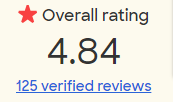Heel Pain Treatment and Relief by Dr. David P. Rosenzweig
Heel pain is one of the most common forms of foot pain in adults. Heel pain is a common condition in which weight bearing on the heel causes extreme discomfort. Heel pain usually occurs as a result of normal daily activities and / or exercise. The heel bone (calcaneus) is the largest bone in the foot and the heel is the first part of the foot to contact the ground during walking or any form of exercise.
Heel pain is most often caused by plantar fasciitis — a condition that is sometimes also called heel spur syndrome when a spur is present. Heel pain may also be due to other medical causes, such as a stress fracture, tendonitis, arthritis, nerve irritation, or, rarely, a cyst. Because there are several potential causes, it is important to have heel pain properly diagnosed by a podiatrist.
Retro Heel Pain (Retro Calcaneus Bursitis) or Haglund’s Deformity: When retro heel pain (Retro Calcaneus Bursitis) exists in conjunction as Achilles tendinitis in the same leg, this is known as Haglund’s deformity. Retro Calcaneus Bursitis is a painful inflammation of the bursa at the back of the heel bone. Achilles tendinitis is inflammation of the Achilles tendon.
The most common cause for heel pain is inflammation of the fibrous connective tissue on the sole of the foot (plantar fasciitis). Other causes include the following:
- Achilles tendonitis
- Bone bruises
- Excessive pronation (tendency of the foot to turn inward)
- Haglund’s deformity (bony growth at the back of the heel that usually occurs when shoes repeatedly aggravate tissue and underlying bone)
- Heel spurs (also called bone spurs)
- Inflammatory conditions (e.g., ankylosing spondylitis, diffuse idiopathic skeletal hyperostosis, rheumatoid arthritis, bursitis)
- Sever’s disease (relatively common condition in active growing children and adolescents)
- Soft-tissue sarcoma of the foot (rare)
- Stress fractures of the foot or ankle
- Tarsal tunnel syndrome
Nonsurgical Medical Treatments
- Prescription oral nonsteroidal anti-inflammatory medications.
- Cortisone injections
- Foot taping and padding
- Physical therapy
- Custom orthotics – A computer scan produces a custom device to fit your foot which can often relieve the strain on the tissues and permit the heel to recover
Surgical Treatments for Heel Pain
- If nonsurgical medical treatments fail and pain continues, surgical intervention may be necessary.
- Both surgical procedures described below are usually completed on an outpatient basis. They are performed comfortably under either local anesthesia or minimal sedation.
Removal of Connective Tissue (Fascia): During surgery to separate all or a portion of the fascial tissue from the heel bone, the surgeon will make a small incision on the inside of the heel. Then, the tissue is carefully removed. A few stitches will be required.
Bone Spur Removal: Heel spurs may be removed during the same operation for separating the connective tissue from the heel bone. After the tissue has been detached, the surgeon will remove any spurs, leaving the heel bone smooth.
Advanced Footcare Center
90 South Ridge Street
Rye Brook, New York 10573
T: (914) 937-7077
E: info@footdoctorcenters.com


Leave a Reply
Want to join the discussion?Feel free to contribute!